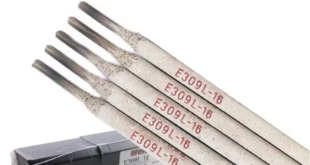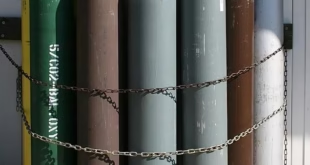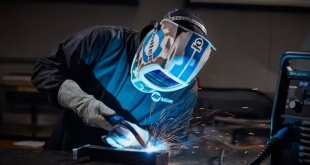Designing Welded Joints: Types, Symbols, and Best Practices
Welding is the backbone of modern metal fabrication, enabling the creation of strong, permanent joints in everything from pipelines to skyscrapers. However, the strength and integrity of a welded assembly aren’t just determined by the welder’s skill—it begins with smart joint design. Poorly designed joints can lead to weak structures, premature failure, and excessive welding costs.

Types of Welds
Different weld types are chosen based on joint geometry, strength requirements, and accessibility. Each type serves specific structural and manufacturing purposes:
1. Butt (Groove) Welds
These welds are made between two members aligned in the same plane. They often require edge preparation like beveling or grooving to ensure full fusion and penetration—especially for thick sections.
Common Groove Types: Square, V, Bevel, U, J.
Applications: Pipe welding, pressure vessels, structural beams.
2. Fillet Welds
Fillet welds are triangular in shape and join two surfaces at approximately right angles. They’re easy to apply and do not typically require joint edge prep.
Common Configurations: Lap, Tee, and Corner joints.
Strength Consideration: Strength is based on leg size and effective throat.
3. Edge Welds
These welds occur at the adjoining edges of two parallel plates. They’re typically used when the joint will be loaded in shear and aren’t heavily stressed.
Used In: Flanged joints, reinforcement plates, tanks.
4. Plug and Slot Welds
Formed by filling round (plug) or elongated (slot) holes cut into one member and welded to the underlying surface. Often used in lap joints or where back access is limited.
Function: Substitute for bolts or rivets; distribute loads.
5. Spot and Seam Welds
Primarily used in sheet metal fabrication using resistance welding. Spot welds join two surfaces at localized points, while seam welds provide continuous or intermittent welds along a joint.
Common In: Automotive panels, HVAC ducting, enclosures.
Types of Welded Joints
Understanding the joint configuration is critical for selecting the appropriate weld type and predicting load paths.
1. Butt Joint
Workpieces are aligned in the same plane and joined at the edges. With proper preparation, they offer high strength and clean weld appearance.
Typical Use: Pipe splicing, plate fabrication.
2. Lap Joint
One piece overlaps another, and welds are placed along the edges. While easy to fabricate, lap joints are prone to corrosion in overlapping areas.
Preferred For: Thin gauge materials, sheet metal work.
3. Tee Joint
A perpendicular joint where one member intersects another forming a ‘T’. Fillet welds are commonly applied on both sides for strength.
Strength Factor: Subject to residual stress buildup if not carefully designed.
4. Corner Joint
The edges of two plates meet at a corner to form an L shape. May be internal (open corner) or external (closed corner).
Common In: Box frames, enclosures.
5. Edge Joint
Edges are placed side-by-side and welded at the seam. Used when plates are flanged or reinforced.
Best For: Reinforcing joints and flange welds.
Edge Preparation and Groove Configurations
Edge preparation ensures proper weld penetration and fusion, especially critical for thicker materials.
Square Groove: No prep needed; only suitable for thin metals.
V-Groove: Beveled from both sides, enabling full penetration for medium-thickness joints.
Bevel Groove: One-sided bevel; ideal when access is limited.
U-Groove: Curved edges reduce the volume of weld metal needed; good for automated welding.
J-Groove: One curved side for applications where welding is only accessible from one side.
Welding Symbols and Their Interpretation
Welding symbols are a critical part of technical drawings, acting as a universal language between design and fabrication teams. They convey essential details like weld type, size, location, and finish—all in a compact graphical format standardized by codes like AWS A2.4. Understanding these symbols ensures that the welder follows the design intent precisely. If you’d like a deep dive into how to read and interpret welding symbols, check out our comprehensive guide on Welding Symbols and Their Interpretation
Factors Influencing Weld Joint Design
Effective joint design considers structural, material, and economic factors.
1. Load Direction and Type
Tension, shear, bending, and torsion forces influence joint selection.
For example, butt joints are ideal for tensile loads, while fillet welds are best for shear.
2. Material Type and Thickness
Dissimilar materials may require special filler metals or preheating.
Thicker materials often need full-penetration grooves and multi-pass welds.
3. Welding Position and Access
Flat and horizontal positions are preferred for better control.
Complex geometries may require robotic or mechanized welding for consistency.
4. Heat Input and Distortion Control
Excessive heat leads to warping, especially in large flat plates.
Use of intermittent welds or balanced welding sequences helps mitigate distortion.
5. Inspection Requirements
NDT methods like radiographic or ultrasonic testing require full access and defect-free welds.
Groove welds allow easier inspection of internal flaws compared to fillet welds.
6. Code Compliance
Projects may fall under codes like AWS D1.1 (structural steel), ASME Section IX (pressure vessels), or API 650 (storage tanks).
Each standard specifies acceptable joint configurations, preparation, and inspection criteria.
Best Practices in Weld Joint Design
Adhering to best practices leads to stronger welds, reduced rework, and improved reliability:
Use Prequalified Joint Details: Refer to AWS D1.1 or ASME B31.3 for pre-approved designs.
Limit Weld Size: Oversized welds increase heat input, cost, and distortion.
Avoid Sharp Transitions: Stress concentration can occur at sudden thickness or geometry changes.
Design for Accessibility: Ensure joints are reachable for both welding and inspection.
Balance Welds Symmetrically: This reduces residual stress and warping in frames and structures.
Control Gaps and Fit-Up: Large root openings or misaligned parts increase the risk of defects like burn-through or lack of fusion.
Choose the Right Process: MIG, TIG, Stick, or Flux-Core each have strengths. Match the process to the joint and application.
Document with WPS and PQR: Provide clear Welding Procedure Specifications (WPS) and Procedure Qualification Records (PQR) for critical projects.
FAQs
What’s the difference between a fillet weld and a groove weld?
A fillet weld joins surfaces at a right angle without edge preparation, while a groove weld requires edge prep and typically allows for full penetration.
How do welding symbols help in fabrication?
They communicate detailed weld instructions—type, size, location, and process—clearly and universally, reducing errors in manufacturing.
Can you use a fillet weld in a butt joint?
No, butt joints are joined edge-to-edge and require groove welds, not fillets.
Why is joint accessibility important in welding design?
Limited access can lead to poor weld quality or inability to inspect critical areas, especially in confined spaces or overhead welds.
Do welding codes mandate joint design?
Yes. Codes like AWS D1.1 and ASME Section IX provide strict requirements for joint types, dimensions, preparation, and testing.
Conclusion
The success of any welded structure hinges on solid joint design. From selecting the appropriate weld and joint type to using standardized symbols and following best practices, attention to detail at the design stage prevents costly errors in the shop or field. Whether you’re designing a bridge, pressure vessel, or handrail, proper welded joint design ensures structural integrity, cost efficiency, and code compliance.
 Welding of Welders All about Welding and Welders
Welding of Welders All about Welding and Welders



